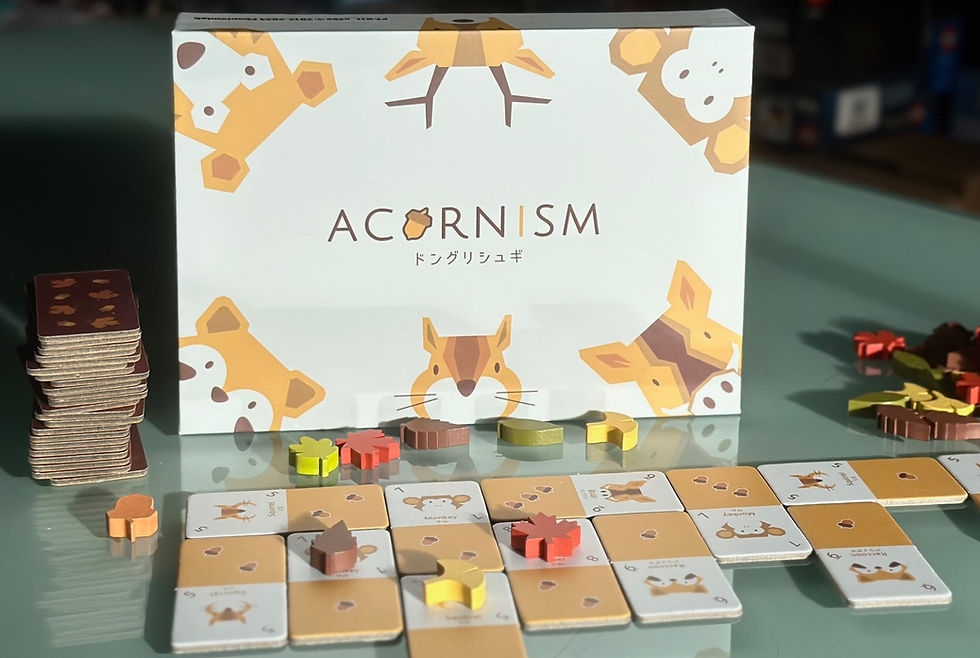Tulip Bubble
- Board's Eye View

- Feb 2, 2018
- 3 min read
Updated: May 14, 2021
Stock and share markets offer a rich vein for game developers to mine. Price manipulation and the push-pull impact of supply and demand lend themselves exceptionally well to replication in a board game analogue. It is surprising then that there have been relatively few games that have focused on some of the great boom and bust markets of history. We all have some vague awareness of the 'South Sea Bubble' and we’ve mostly heard of but actually know little about the mad 17th century speculation in tulip bulbs.

In Tulip Bubble (Moaideas Game Design), players are seeking to make profits by buying tulips of different colours, grades and fluctuating values. Where two or more players try to buy the same tulip, they compete in an auction. Players can borrow from the bank to buy tulips but for every tulip they have on hock to the bank, they have one fewer token available to bid for new purchases in the next round. After the buying spree, the tulip colour for which there is a glut (most tulips of that colour left in the market) will decrease in value; the colour in shortest supply (fewest tulips left in the market) will increase in value. Where two colours are tied for most or fewest in the market, the rules state that both are moved but the rules don't specify the order in which they are moved. No two tulip colours can occupy the same spot on the market price chart so the order in which tulips are moved prove to be quite critical. This is therefore quite a serious omission, especially as ties in the market are very likely to occur during the course of every game.
At the start of each turn, a random event card is flipped. These will also affect the price - either increasing the value of a specific colour of tulip or crashing the price of the colour with the current highest value.
Each turn, following the event card, players can also sell tulips into the market or to a collector who pays a premium for a set of three tulips matching his exact specification.
In the 1630s, speculators probably convinced themselves that they were in a market that would always continue to rise. That’s how this early futures market developed and how crazy valuations were reached: single tulip bulbs are said to have changed hands for 10 times the annual income of a skilled craftsman. As players in Tulip Bubble, we are privy to information that was not available to those caught up in the tulip mania of history: we know that the speculative bubble will burst. Seeded in the event deck is a ‘Bubble Bust” card which is shuffled in with the bottom two cards and so will come up after 7–9 rounds. When it is flipped, it immediately ends the game. Needless to say, tulips owned at this point will be worthless; so this is a game where players will hope to maximise their profits and get out of the market before it collapses.
This means that games will come down to a push-your-luck element, with the winner likely to be the player who doesn’t ditch the market too soon but who gets out just before the “Bubble Bust” card is turned. That doesn’t spoil the fun and tension, though, of this market manipulation game, especially as the game can also be instantly won by any player who buys the legendary black tulip (in effect, any player who manages to accumulate 120 guilders with no debt) before the tulip bubble bursts.
Tulip Bubble is an attractively presented game for 3–5 players which offers a thematically appropriate balance of skill and luck. A game shouldn’t take longer than an hour, so, even though the rounds are repetitive, this isn’t a game that is likely to overstay its welcome.
And there may be lessons in this game for anyone tempted to pour their life savings into cryptocurrencies...




